#Sculpture products in London
Text
What it meant to "do geology" in Hutton's time was to apply lessons of textual hermeneutics usually reserved for scripture [...] to the landscape. Geology was itself textual. Rocks were marks made by invisible processes that could be deciphered. Doing geology was a kind of reading, then, which existed in a dialectical relationship with writing. In The Theory of the Earth from 1788, Hutton wrote a new history of the earth as a [...] system [...]. Only a few kilometers away from Hutton’s unconformity [the geological site at Isle of Arran in Scotland that inspired his writing], [...] stands the remains of the Shell bitumen refinery [closed since 1986] as it sinks into the Atlantic Ocean. [...] As Hutton thought, being in a place is a hermeneutic practice. [...] [T]he Shell refinery at Ardrossan is a ruin of that machine, one whose great material derangements have defined the world since Hutton. [...]
The Shell Transport and Trading Company [now the well-known global oil company] was created in the Netherlands East Indies in 1897. The company’s first oil wells and refineries were in east Borneo [...]. The oil was taken by puncturing wells into subterranean deposits of a Bornean or Sumatran landscape, and then transported into an ever-expanding global network of oil depots at ports [...] at Singapore, then Chennai, and through the Suez Canal and into the Mediterranean. [...] The oil in these networks were Bornean and Sumatran landscapes on the move. Combustion engines burnt those landscapes. Machinery was lubricated by them. They illuminated the night as candlelight. [...] The Dutch East Indies was the new land of untapped promise in that multi-polar world of capitalist competition. British and Dutch colonial prospectors scoured the forests, rivers, and coasts of Borneo [...]. Marcus Samuel, the British founder of the Shell Transport and Trading Company, as his biographer [...] put it, was “mesmerized by oil, and by the vision of commanding oil all along the line from production to distribution, from the bowels of the earth to the laps of the Orient.” [...]
---
Shell emerged from a Victorian era fascination with shells.
In the 1830s, Marcus Samuel Sr. created a seashell import business in Houndsditch, London. The shells were used for decorating the covers of curio boxes. Sometimes, the boxes also contained miniature sculptures, also made from shells, of food and foliage, hybridizing oceanic and terrestrial life forms. Wealthy shell enthusiasts would sometimes apply shells to grottos attached to their houses. As British merchant vessels expanded into east Asia after the dissolution of the East India Company’s monopoly on trade in 1833, and the establishment of ports at Singapore and Hong Kong in 1824 and 1842, the import of exotic shells expanded.
Seashells from east Asia represented the oceanic expanse of British imperialism and a way to bring distant places near, not only the horizontal networks of the empire but also its oceanic depths.
---
The fashion for shells was also about telling new histories. The presence of shells, the pecten, or scallop, was a familiar bivalve icon in cultures on the northern edge of the Mediterranean. Aphrodite, for example, was said to have emerged from a scallop shell. Minerva was associated with scallops. Niches in public buildings and fountains in the Roman empire often contained scallop motifs. St. James, the patron saint of Spain, was represented by a scallop shell [...]. The pecten motif circulated throughout medieval European coats of arms, even in Britain. In 1898, when the Gallery of Palaeontology, Comparative Anatomy, and Anthropology was opened in Paris’s Museum of Natural History - only two years after the first test well was drilled in Borneo at the Black Spot - the building’s architect, Ferdinand Dutert, ornamented the entrance with pecten shell reliefs. In effect, Dutert designed the building so that one entered through scallop shells and into the galleries where George Cuvier’s vision of the evolution of life forms was displayed [...]. But it was also a symbol for the transition between an aquatic form of life and terrestrial animals. Perhaps it is apposite that the scallop is structured by a hinge which allows its two valves to rotate. [...] Pectens also thrive in the between space of shallow coastal waters that connects land with the depths of the ocean. [...] They flourish in architectural imagery, in the mind, and as the logo of one of the largest ever fossil fuel companies. [...]
---
In the 1890s, Marcus Samuel Jr. transitioned from his father’s business selling imported seashells to petroleum.
When he adopted the name Shell Transport and Trading Company in 1897, Samuel would likely have known that the natural history of bivalves was entwined with the natural history of fossil fuels. Bivalves underwent an impressive period of diversification in the Carboniferous period, a period that was first named by William Conybeare and William Phillips in 1822 to identify coal bearing strata. In other words, the same period in earth’s history that produced the Black Spot that Samuel’s engineers were seeking to extract from Dayak land was also the period that produced the pecten shells that he named his company after. Even the black fossilized leaves that miners regularly encountered in coal seams sometimes contained fossilized bivalve shells.
The Shell logo was a materialized cosmology, or [...] a cosmogram.
Cosmograms are objects that attempt to represent the order of the cosmos; they are snapshots of what is. The pecten’s effectiveness as a cosmogram was its pivot, to hinge, between spaces and times: it brought the deep history of the earth into the present; the Black Spot with Mediterranean imaginaries of the bivalve; the subterranean space of liquid oil with the surface. The history of the earth was made legible as an energetic, even a pyrotechnical force. The pecten represented fire, illumination, and certainly, power. [...] If coal required tunnelling, smashing, and breaking the ground, petroleum was piped liquid that streamed through a drilled hole. [...] In 1899, Samuel presented a paper to the Society of Arts in which he outlined his vision of “liquid fuel.” [...] Ardrossan is a ruin of that fantasy of a free flowing fossil fuel world. [...] At Ardrossan, that liquid cosmology is disintegrating.
---
All text above by: Adam Bobbette. "Shells and Shell". e-flux Architecture (Accumulation series). November 2023. At: e-flux dot com slash architecture/accumulation/553455/shells-and-shell/ [Bold emphasis and some paragraph breaks/contractions added by me. Presented here for commentary, teaching, criticisms purposes.]
65 notes
·
View notes
Text
been listening to you're wrong about and like. okay @barren-and-trivial-words said once that on hannibal, serial killing is fundamentally considered a type of artistic pursuit. and they were right, obviously they were right. that's the basic structure almost, of the series. my favorite example is the eye sculpture serial killer where hannibal is literally like. we are situated in his gaze and he is evaluating the sculpture on artistic merit. but overall hannibal is a tv show about aestheticism and the inherent amorality of aestheticism - it is of course immoral to kill, but it is also often beautiful to kill, and shouldn't beauty outweigh morals sometimes?
and the thing is, media is... a good place to make this point. obviously because making a point is going to be in media, but the nature of hannibal as a tv show for consumption means that aesthetics will always trump morals. because the people on the show aren't real, but the beauty is, beauty does by default outweigh morals.
so hannibal kind of becomes this fascinating metatextual text on the nature of stories, or, you know, it can be read that way. because it is in the nature of all stories for beauty to outweigh morals.
but it's also a comment on the nature of serial killers as a concept. i want to link the two episodes of you're wrong about that got me thinking about this - both of these episodes are about the symbiotic relationships serial killers have with media. with fiction but even more especially with news and non-fiction. serial killers sell papers, and in fact the figure of the serial killer is kind of invented to sell papers - in one of these episodes, sarah marshall reads off a letter sent to a london paper "from" jack the ripper that was probably actually forged by a journalist to heat up the news cycle. it's very cinematic, it reads as absolutely cliche to the modern ear and maybe to the victorian one as well, but i'm sure it made the paper that printed it a lot of money.
and one of the things that i already kind of knew but was reinforced in these episodes is that most of the common knowledge that the public has about "serial killers" both in general and in specific cases is just... wrong. and that's for a lot of reasons. some of it is definitely because it's convenient for the police to have access to the figure of the mastermind serial killer for all sorts of reasons, especially to cover their own incompetence or to just pawn off unsolved cases. but also it's because the media needs sensation to sell papers, and so lurid stories of superhuman killers are just a lot tastier than some guy who murdered three women for obvious, petty reasons and also molested his stepdaughters. the public demands uniqueness, spectacle, extremity. it's not enough to bleed if you want to lead, stories have to bleed spectacularly. so the modern concept of the serial killer was built almost entirely on the back of newspapers, true crime paperbacks, and silence-of-the-lambs-alike feature films. it's not like. a real thing. it's a product of the spin factory, re-working reality into something marketable.
and hannibal lecter - the original, fava beans and a nice chianti hannibal lecter - is perhaps the height of this cultural concept, the star of the serial killer... craze? moral panic? i suppose the word is phenomenon. so it's interesting to read bryan fuller's hannibal as a kind of indulgent commentary on the existence of the newspaper-literary "serial killer" figure.
[i would also recommend ywa's episodes on ed gein, jeffrey dahmer, and the dc snipers for more perspectives on serial killers. while i'm at it you should also listen to their episodes on gangs, human trafficking, sex offenders, the satanic panic, stranger danger, and true crime, but i realize i'm kinda pushing it.]
120 notes
·
View notes
Photo
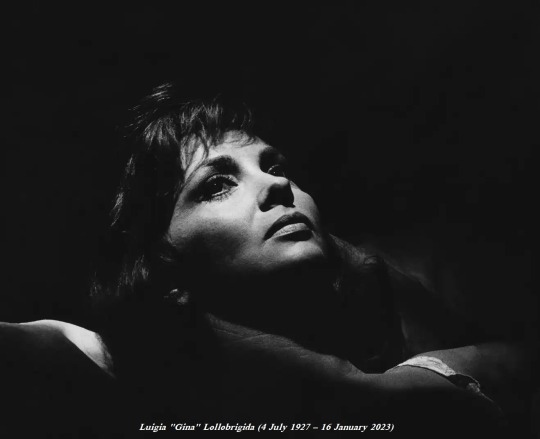









Ms Luigia "Gina" Lollobrigida OMRI (4 July 1927 – 16 January 2023)
Destined to be called "The Most Beautiful Woman in the World", Ms Lollobrigida was the daughter of a furniture manufacturer, and grew up in the pictorial mountain village. She studied sculpture at Rome’s Academy of Fine Arts, and started her career with minor Italian film roles before coming third in 1947’s Miss Italia pageant.
After refusing a contract with Howard Hughes to make three pictures in the United States in 1950, Ms Lollobrigida gained for starring turns in 1952’s “Fanfan la Tulipe” and 1953’s “Bread, Love and Dreams,” the latter of which netted her a BAFTA nomination for Best Foreign Actress.
Ms Lollobrigida’s first American film was “Beat the Devil,” a 1953 adventure comedy directed by John Huston that cast her opposite Humphrey Bogart. Over the course of the ’50s and ’60s, she starred in numerous French, Italian and European-shot American productions, with highlights including “Trapeze” with Burt Lancaster and Tony Curtis, “The Hunchback of Notre Dame” as Esmerelda, “Solomon and Sheba” with Yul Brynner, “Never So Flew” with Frank Sinatra and Steve McQueen, “Come September” with Rock Hudson, and “Woman of Straw” with Sean Connery, and “Buona Sera, Mrs. Campbell,” with Shelley Winters.
Her roles made her a major sex symbol of Italian cinema; in 1953, she won Italy’s David di Donatello award for Best Actress for her performance in the opera star Lina Cavalieri’s biopic “Beautiful But Dangerous,” known in Italian as “The World’s Most Beautiful Woman.”
She later won two more David di Donatello Award for “Imperial Venus” and “Buona Sera, Mrs. Campbell,” a Golden Medal of the City of Rome in 1986, a 40th Anniversary David in 1996 and a 50th Anniversary David in 2006. In 1961, she won the Golden Globes’ Henrietta Award for “World Fan Favorite,” and received nominations for “Falcon Crest” and “Buona Sera, Mrs. Campbell.”
After the ’60s, Lollobrigida’s career began to slow down, but she continued to act intermittently, including in the 1995 Agnes Varda film “Les cent et une nuits de Simon Cinéma,” and in ’80s TV shows such as CBS’ “Falcon Crest” and ABC’s “The Love Boat.”
Ms Lollobrigida also developed a successful second career in photojournalism during the ’80s. She obtained an exclusive interview with Cuban leader Fidel Castro and also photographed many famous film stars, as well as publishing a number of books of her photographs.
In 2011 she made her final film appearance, playing herself in a cameo for the Italian parody film “Box Office 3D: The Filmest of Films.”
The screen legend sale of some of her 23 jewels from her Bulgari collection at Sotheby’s in 2013 to help fund an international hospital for stem-cell research.
On 16 October 1999, Lollobrigida was nominated as a Goodwill Ambassador of the UN Food and Agriculture Organization
Ms Lollobrigida won the Berlinale Camera at the Berlin Film Festival in 1986, Karlovy Vary Film Festival special prize in 1995, and the Rome Festival’s career prize in 2008. In 2018, she received a star on the Hollywood Walk of Fame.
Ciao, Gina, Riposa in Pace
(Armando Pietrangeli, “Light and Shadow,” Gina Lollobrigida,1960, Trapeze 1956, Woman Of Rome,1954, Salomon & Sheba,1959, Come September, 1961,Un Bellissimo Novembre,1968, The Hunchback of Notre Dame,1956, In London to publicise her book of photographs titled Italia Mia,1974, Fidel Castro shot by Ms Lollobrigida,1974, Gina Lollobrigida pictured on July 11, 2022 in Rome).
#art#movirs#film#legend#gina lollobrigida#rip#rip gina lollobrigida#agnes varda#rock hudson#ciao#photography#icon#holywood#italy#falcon cest#the love boat#Esmeralda#yul brynner#howard hughes#paul newman#fidel castro#tony curtis#sheba#the hunchback of notre dame#trapeze#bafta#burt lancaster#frank sinatra#golden age#UN
289 notes
·
View notes
Text
Why so green? Am I seeing Wicked or Phantom?
Did POTO Korean producers S&CO do something to make POTO Korea’s proscenium look so gross and green in order to discourage audiences from taking photos? (You bet this did not happen in NYC, London & China!!)
So S&CO in Korea has these extremely strict rules:
(1) Absolutely no curtain call photos/videos allowed.
(2) No designated day(s) for fans to meet & greet Phantom actors at all. Stage dooring for Phantom in Korea doesn’t exist. Actors either (a) stop to wave and bow and then get into a car or (b) walk quickly while smiling and bowing.
(3) No official curtain call photos/videos were ever released except a few seconds in promotional videos early in the production.
So one day, my phriend @jeremyonthelair and I were talking about POTO’s proscenium and how beautiful the angel statue is. But then he mentioned something that piqued my interest right away.
“Did you notice Korea proscenium in Charlotte theater has a green tint on all the golden sculptures? And the strangest thing is I didn’t see the green tint in person!! Only in photos!!”
Side note: Jeremy saw POTO China this past summer and POTO Korea in the fall, so you could say he had something to compare to in a short period of time.
We proceded to share proscenium photos – Jeremy with his China and Korea photos and me with Bway photos.
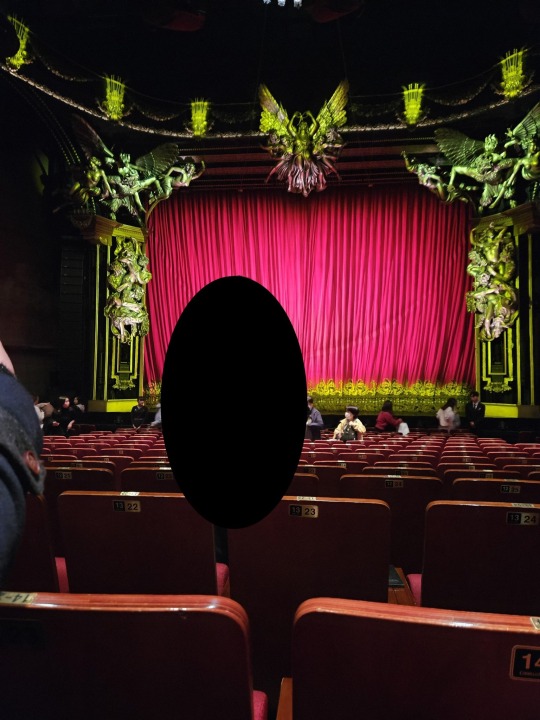
↑ Jeremy’s Korea photo
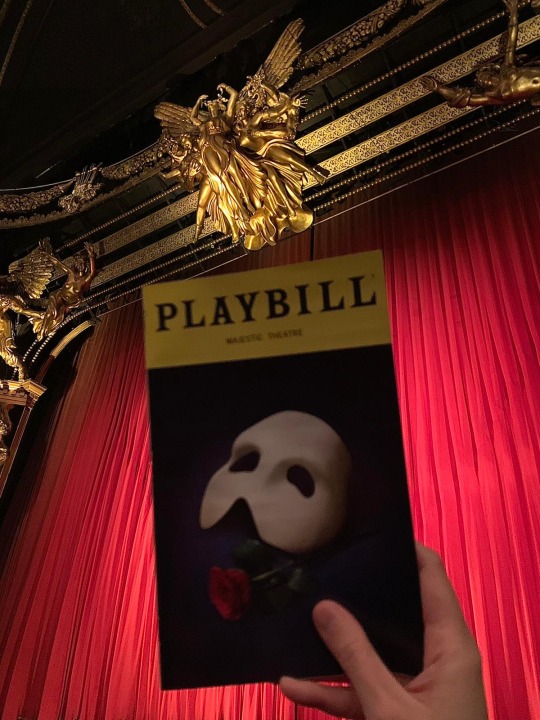
↑ My Majestic theatre photo taken on the day of the last public performance

↑ Jeremy’s Shanghai photo
Please note: I did not edit any photos in this post at all (other than a black oval to cover my phriend).
Here I have compiled some Korea proscenium photos as evidence. And for comparison, I also added some Majestic theatre photos provided by me and a fellow NY phan @flagbridge – along with some POTO China photos.
Jeremy’s Korea photos:

1) ↑ Taken with an iPhone

2) ↑ Taken with a Samsung
The weirdest thing is —

3) ↑ Film camera looks fine

4) ↑ Xiaomi phone is less affected, somewhat
Here are some Charlotte theater photos and videos I found online:
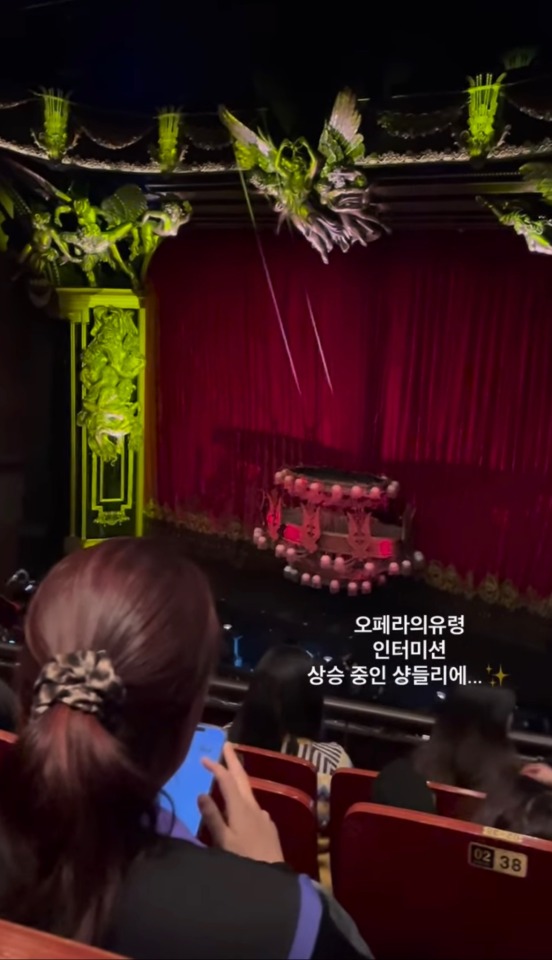
1) ↑ Click on the link below to view the video. Yikes, this does not look good!
https://www.instagram.com/reel/Cz09hP6rh-B
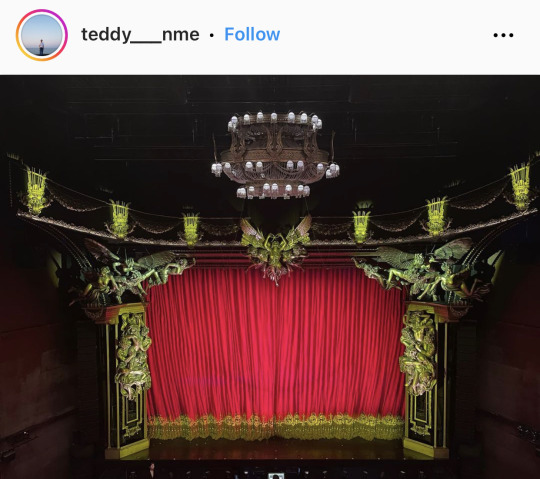
2) ↑ Another one from Mezzanine level
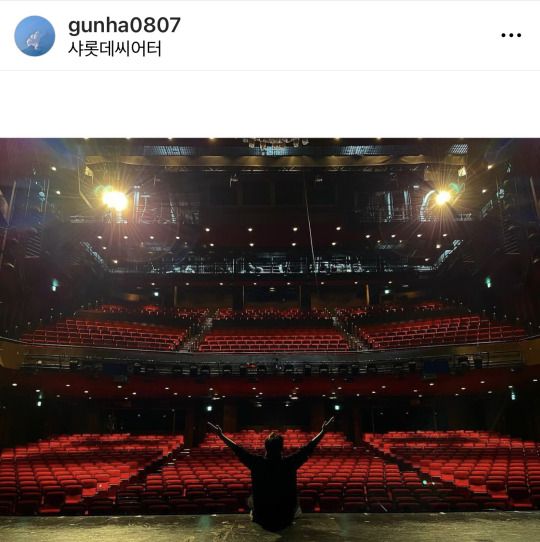
3) ↑ The current Korean Raoul, Gunha Hwang, posted this photo of the stage in Seoul – are these lights what’s turning everything green?
https://www.instagram.com/p/Cz0ZmborHIj
The same thing is happening in Daegu, Korea right now:
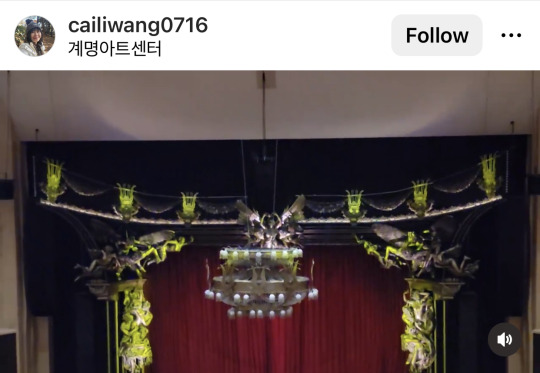
4) ↑ Posted Dec 23 in Daegu – click on the link to view the video
https://www.instagram.com/p/C1L4dEjBTkj

5) ↑ Another video from Daegu
https://www.instagram.com/reel/C1OnYyLJ6ry/
Now here are my Majestic theatre photos:

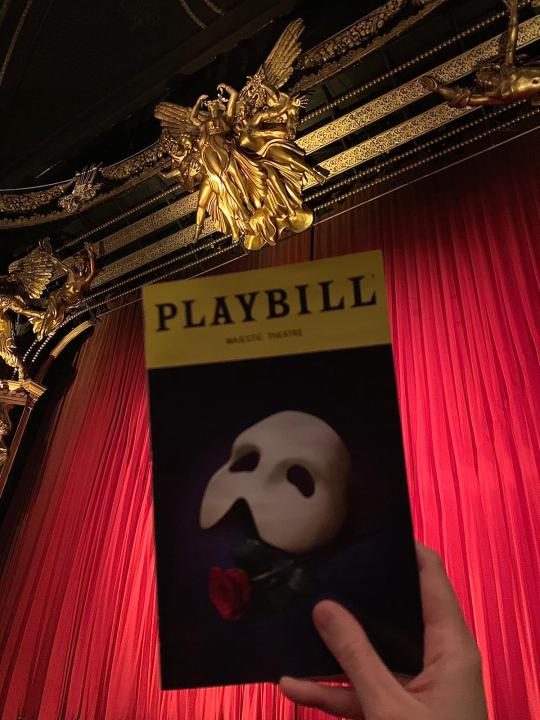
↑ Taken in April of 2023

↑ Here is another Majestic photo from a fellow NY phan @flagbridge
https://www.tumblr.com/flagbridge/728351820760612864/shows-i-saw-in-2023-part-1-phantom-of-the-opera
Let’s take a look at POTO China proscenium taken by theatre-goers:

↑ https://weibo.com/1766731021/4959005917580968

↑ https://weibo.com/3965362386/4967561219803733
My question to @lucygold95 @roadtophantom @fadinglandtragedy who have seen POTO in Korea. Did you see the gross green tint on the proscenium in person? Why do you think this is only happening in Korea?
I’d love to hear other phans’ thoughts as well!
Lastly, I want to thank my phriends Jeremy and @flagbridge for letting me use their photos.
#오페라의 유령#剧院魅影中文版#the Phantom of the Opera#Phantom of the Opera#Phantom Broadway#Phantom Bway#POTO#POTO Korea#POTO China#Majestic Theatre#Charlotte Theater
37 notes
·
View notes
Text
Eddie Redmayne and Wife Hannah Bagshawe Twin at the 2024 Met Gala
The 'Cabaret' actor attended the annual event just days after he received a Tony nomination
By Victoria Edel
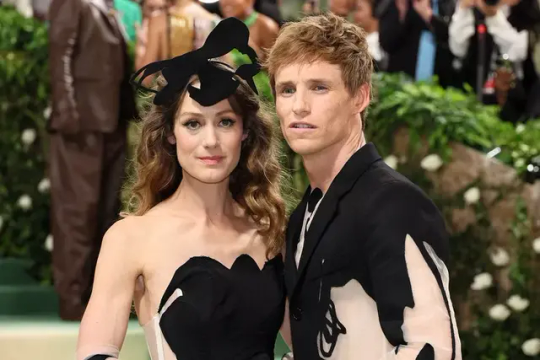
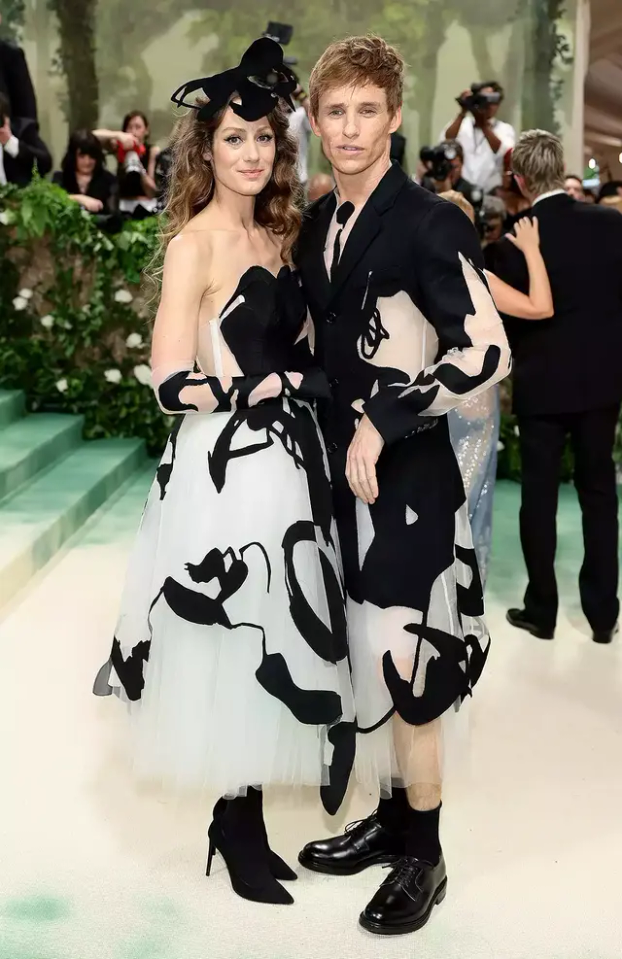

Eddie Redmayne and his wife Hannah Bagshawe were couple goals at the 2024 Met Gala as they hit the green carpet in coordinating outfits.
“We’re wearing matching outfits!” Redmayne, 42, delightfully told Vogue red carpet hosts Gwendoline Christie and Ashley Graham on May 6. “This is by a gentleman called Steve O. Smith, a young designer. He’s had two collections. He’s an extraordinary man and an extraordinary designer.”
Both husband and wife’s looks featured big black blotches on layers of white tulle. Bagshawe’s outfit featured a tea-length dress with a matching sculptural hat, gloves and pointy black boots. Meanwhile, the Fantastic Beasts star’s outfit was a long, tulle blazer with the same black ink-spots, a tie and black oxford shoes.
Redmayne currently stars on Broadway as the Emcee in Cabaret, a role he also played on London’s West End in 2021. On April 30, Redmayne received a Tony nomination for the part.
“I just saw you live,” Graham, 36, told the actor Monday night. “I was in the front row, and I have to say your character, you embody that character!”
“I hope I wasn’t too lascivious,” Redmayne joked. Of the show, which is set in Germany in 1929, he said, “We’re having the most amazing time. The show is in the round. When you come from 52nd Street, you step into this whole world of the Weimar Republic. The audience is so electric.”
'Sleeping Beauties': The 2024 Met Gala Theme Explained — and How Stars Will Interpret the Dress Code
He also praised his costar, Gayle Rankin, who received a Tony nomination as well.
Redmayne also teased his upcoming TV series, The Day of the Jackal, adding that he’s “playing an assassin who wears quote debonaire suits — probably not tulle skirts!”
Redmayne previously wore one of Smith’s designs for Cabaret’s Broadway opening night earlier this spring. The Oscar winner is also Tony-nominated as one of the show’s producers, and previously won a Tony in 2010 for the play Red.
Redmayne and Bagshawe, 41, have been married since 2014. They share two children, daughter Iris, 7 1/2, and son Luke, 6. The couple have attended the Met Gala together many times, including the 2023 event.
See all of PEOPLE’s Star-Studded Met Gala Coverage in One Place!
The Met Gala was a rare night off for Redmayne, who performs in Cabaret eight times a week.
"You live like a monk," he explained of the intense Broadway schedule during the April 25 episode of Live with Kelly and Mark. "It’s sort of this odd thing where you’re inviting audiences to come and have a hedonistic, sort of all-consuming evening and yet, you are only drinking water, not speaking, all that stuff."
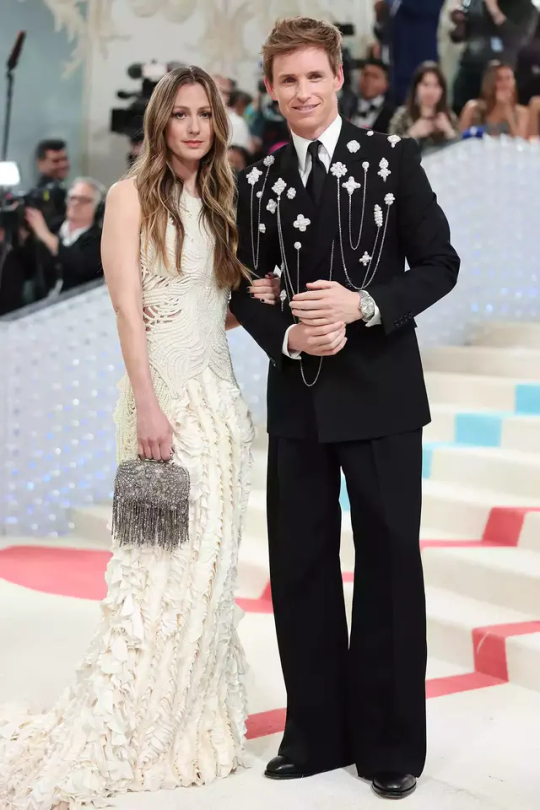
"The role itself is quite a workout, but I have this brilliant man called Greg who is sort of this icon on Broadway in that he is the man who keeps people upright," the Good Nurse actor explained. "I go and see him, I saw him last night. He’s a masseuse. But as much as I love him, and I have great respect for you Greg, he’s horrendous. It’s absolute agony. It’s that sort of thing where you think the pain, it must be doing something, right?"
"I was telling this to Greg last night, he was like, ‘Eddie, your body, it’s broken.’ And it makes you feel so heroic," he added. "‘Yeah, I’m the toughest Emcee in the world!’ " Redmayne’s production is the fifth Broadway production of Cabaret. Most recently, Alan Cumming played the Emcee in both the 1998 and 2014 revivals.
https://people.com/eddie-redmayne-hannah-bagshawe-matching-outfits-met-gala-2024-8644343
#eddie redmayne#best actor#talent#met gala 2024#hannah bagshawe#obe#model#fashion#actor#nyc#people magazine#article#eddieredmayneedit
10 notes
·
View notes
Text

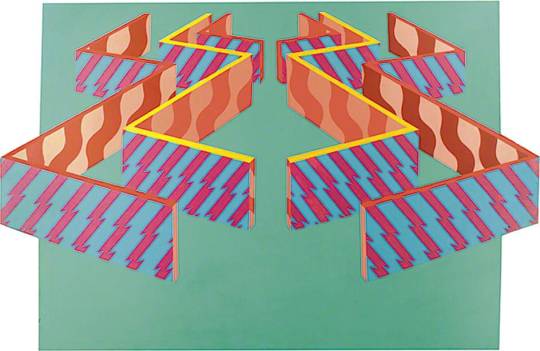
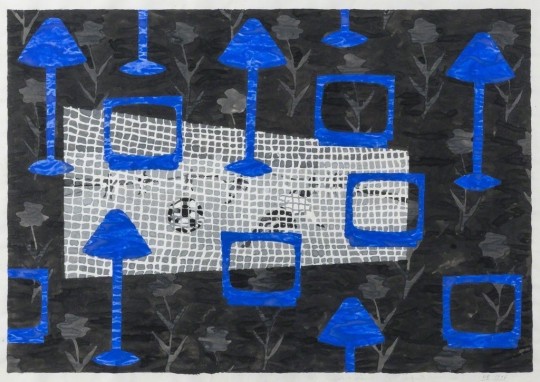
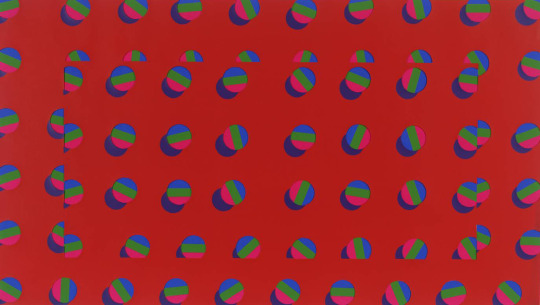
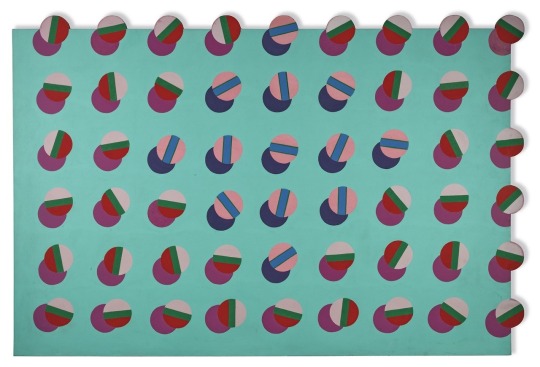
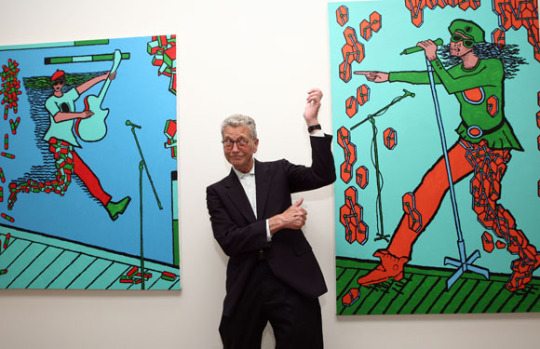
Derek Boshier (British, 1937-2024)
'There’s a funny sort of feeling you get, as if change is a sin. But now I see that’s what I’m about, I’m an artist that does change.’
Born in Portsmouth in 1937 Derek Boshier first came to prominence with his paintings as a student at the Royal College of Art in London where he studied alongside David Hockney, Allen Jones, R.B. Kitaj, and others. Embracing the iconography of British and American mass culture, his paintings earned him recognition as one of the pioneers of British Pop Art. In 1962, he was featured with Peter Blake, Pauline Boty and Peter Phillips in Ken Russell's BBC documentary 'Pop Goes The Easel'. Subsequently he has used other media:drawing, printmaking, film, books, three dimensional objects, installations and photography among them. His graphic work with popular music groups such as The Clash and with David Bowie have brought his work to a wider audience.
Works by Derek Boshier can be found in major museum collections including Tate, The British Museum and the V&A. He lives and works in Los Angeles.
'Derek Boshier brought to British Pop a strong satirical edge which distinguished his work from that of his fellow students at the Royal College of Art. His paintings of 1961-62 made frequent reference to current events, especially those with a political dimension such as the space race between the United States and the Soviet Union. Consumer products such as Pepsi-Cola appeared not in celebration of modern popular culture but as evidence of the insidious inroads of international businesses and Americanisation. SA group of paintings in 1962 prompted by the campaign for a new striped toothpaste examined manipulative forces of advertising and the loss of individual identity that this brought in it’s wake. Boshier’s caustic views about the mass media, and his characteristic ‘custom-built men’ – figures that appear to be cut out, pieced together as in jig-saw puzzle or in the process of disintegration – arose directly from his reading of commentators such as Marshall McLuhan, Vance Packard and John Kenneth Galbraith. Boshier’s Pop phase was short lived. The paintings that he produced in India during 1962-63, virtually all of which were accidentally destroyed near the end of his stay there, adapted similar narrative devices to Hindu symbolism. On his return to England he painted briefly in a formal abstract idiom before turning to Minimalist sculpture and later photography, film and collage. Always curious to experiment different media, he nevertheless maintained a strong involvement through the seventies with political and social themes. In 1979 he returned to painting as his prime activity, at first basing the pictures on images from advertising and the mass media, as he had done in his early Pop pictures and in his more recent collages. In 1980 he moved to Huston, Texas, where he at once found a rich fund of new imagery in his immediate environment. A series of paintings depicting naked cowboys were amongst his most amusing and memorable responses to his new home. During the whole of that decade, prior to his return to England, he elaborated his new iconography with humour and affection but also with the distance and wry observations of a foreigner. The American themes of Boshier’s first phase as a Pop artist thus reappeared 2 decades later in a new guise, coloured by personal experience. In the late nineties Boshier again resettled in the US, this time in Los Angeles, where he made paintings that took up themes and images from his formative Pop works.'
Marco Livingstone 2004 Pop Art UK:British Pop Art 1956-1972 exhibition catalogue Galleria Civica, Modena, 2004
5 notes
·
View notes
Photo




Getty to Acquire Ancient Portrait Bust of Roman Emperor Antoninus Pius
First documented in 1851, the bust was previously unknown to scholars or the public.
The J. Paul Getty Museum is set to acquire an over-life-size ancient Roman marble bust of the emperor Antoninus Pius (ruled AD 138–161).
The work was purchased at auction in December; its final acquisition is subject to an export license being granted by the Arts Council England.
A prime example of Antoninus Pius’s main portrait type, the bust was created sometime after he ascended the throne in AD 138. With minor variations, this portrait type remained the emperor’s official image throughout his reign until AD 161. Carved from a single block of fine-grained white marble, the bust shows the emperor as a mature man with distinct facial features, a full, neatly trimmed beard, and thick curly hair. He wears a tunic, a cuirass (body armor), and a fringed paludamentum (a general’s cloak) folded in half and pinned at his right shoulder.
“This exquisitely sculpted and remarkably preserved portrait ranks among the finest of more than 100 versions of Antoninus’s image that have survived from antiquity,” says Timothy Potts, Maria Hummer-Tuttle and Robert Tuttle Director of the Getty Museum. “The bust adds a new highlight to the series of high-quality imperial portraits at the Getty Villa, including the full-length statue of Antoninus’ wife Faustina the Elder, and the busts of Augustus, Germanicus, Caligula, and Commodus.”
Born in Lanuvium to a family that had migrated to Italy from Nemausus in southern Gaul (today’s Nîmes in France), Antoninus was not groomed to become emperor. At the advanced age of 51, following a career as governor of the province of Asia and as Roman senator, he was adopted by Emperor Hadrian to be his successor. Antoninus’ long and exceptionally peaceful reign brought great prosperity to the Roman Empire, and the economy, culture, and artistic production flourished. The emperor started the dynasty of the Antonines, which lasted for more than two generations and ended with the death of Commodus in AD 192.
“Many objects in our collection were made in the Antonine period, as it is known today, including portraits, mythological sculptures, sarcophagi, and numerous other works,” says Jens Daehner, associate curator of antiquities at the Getty Museum. “The bust of Antoninus provides a firmly dated visual reference for what characterized Roman aesthetics during that period. On display in our galleries, the bust will convey to visitors how, for example, Antonine sculptors carved drapery folds, used drills to give texture to hair, or incised the eyes of their sitters.”
The marble bust was acquired in 1851 in Naples, Italy, by Robert Martin Berkeley (1823–1897), who brought it to his estate at Spetchley Park, Worcestershire, in England. It remained there with his heirs until it was offered at auction late last year at Sotheby’s, London. Although documented in the estate’s archive, the bust was previously unknown to the public or scholars.
Once acquired, the bust of Antoninus Pius will go on display in the Getty Villa’s Later Roman Sculpture gallery with its selection of other Antonine period portraits.
#Getty to Acquire Ancient Portrait Bust of Roman Emperor Antoninus Pius#portrait bust#marble bust#marble sculpture#ancient artifacts#history#history news#ancient history#ancient culture#ancient civilizations#ancient rome#roman history#roman empire#roman art#emperor antoninus pius
68 notes
·
View notes
Text
god nothing makes me angrier than the fact that when they inevitably bring phantom of the opera back to broadway it'll be scaled down with a tiny orchestra to cut production costs like they've done in london. i miss you majestic theatre. i miss you 27-piece orchestra. i miss you proscenium sculptures. i miss you floating angel statue. i want to rip out and eat cameron mackintosh's heart in the marketplace
#bee posts nonsense#no other production comes close to the same vibes as og broadway with the extravagant 80s production value and the orchestra...#it makes me truly murderous whenever i think about it#theatre#phantom of the opera
12 notes
·
View notes
Note
as someone who doesn’t have much knowledge in arts and artists, why do you hate anish kapoor?
oooh boy okay get ready for this story anon
dude's a dick and here's why:
so, anish kapoor is a contemporary artist most famous for his bean sculptures that he does (the chicago bean??? yeah, that's him!! and the bean new york just got as well,, also him)


anyway, back in 2014 a company is working to develop the world's blackest black material known as vantablack which absorbs over 99% of light. it was a material that was mainly used by engineers and people at NASA and such. well, anish kapoor recognizes the artistic potential this vantablack substance has and begins using it in his artwork. and in 2016 kapoor strikes a deal with the creators of vantablack and purchases the exclusive rights to vantablack as an art material. this means that he made it impossible for any other artist to use this new color in any of their works. he was the only one allowed to. (not very art is for the people of him at all.)
in response to kapoor's purchasing of vantablack, artist stuart semple went on a mission to create the world's pinkest pink! semple states that anyone can purchase the world's pinkest pink except anish kapoor. in fact, when you go purchase the world's pinkest pink,, this message pops up:
“By adding this product to your cart you confirm that you are not Anish Kapoor, you are in no way affiliated to Anish Kapoor, you are not purchasing this item on behalf of Anish Kapoor or an associate of Anish Kapoor. To the best of your knowledge, information and belief this paint will not make its way into the hands of Anish Kapoor.”
well, anish kapoor finds out about this and promptly posts this picture,,,

semple then goes on to create iterations of black that will rival vantablack and even creates a diamond dust paint ,,, all with the same stipulations that anyone in the world is allowed to purchase and use his pigments except for anish kapoor.
as of 2019, vantablack is no longer the world's blackest black, so suck it anish kapoor. but it's really astounding to me that kapoor can claim exclusive rights to an artistic material and ensure no one else can use it because he was the highest bidder,, but then once one person tries to give him a taste of his own medicine he can't stand it. like, is not one of the major points of artistic creation to share that knowledge and creation with others???? but instead kapoor turned it into some capitalist monopoly scheme for his own benefit,,, starving artists out of new innovations for his own selfish purposes....
***also unrelated to the art world drama,,,, anish kapoor also added a floor extension to his home in london and was a general dick about it to his neighbors causing them to create a petition to "help try to stop Anish Kapoor [from] blocking our precious light & view, a valuable thing in our crowded city." and they go on to say "You’d think Anish Kapoor would understand the value of light, colour, and social responsibility."
21 notes
·
View notes
Text

The Swing
Artist: Nicolas Lancret (French, 1689–1743)
Date: circa 1735
Medium: Oil on Canvas
Collection: Victoria and Albert Museum, London
Description
Nicolas Lancret (1690-1743) was born in Paris where he first trained as an engraver before becoming the apprentice of the history painter Pierre Dulin (1669–1748), and enrolled as a student at the Académie Royale de Peinture et de Sculpture. He later entered the workshop of the genre and decorative painter Claude Gillot (1673-1722), who had been Watteau’s master (1684-1721). He specialised in the genre of the fêtes galantes inaugurated by Watteau and decorative works for which enjoyed a considerable success.
This painting is a fine example of Lancret’s production of genre paintings showing elegant figures in an outdoor setting. The present picture shows a young lady pulled on a swing by a young man on the edge of a wood and evokes an amorous encounter.
#genre#woman#man#swing#18th century painting#nicolas lancret#french#european#landscape#trees#genre art#woods
3 notes
·
View notes
Text

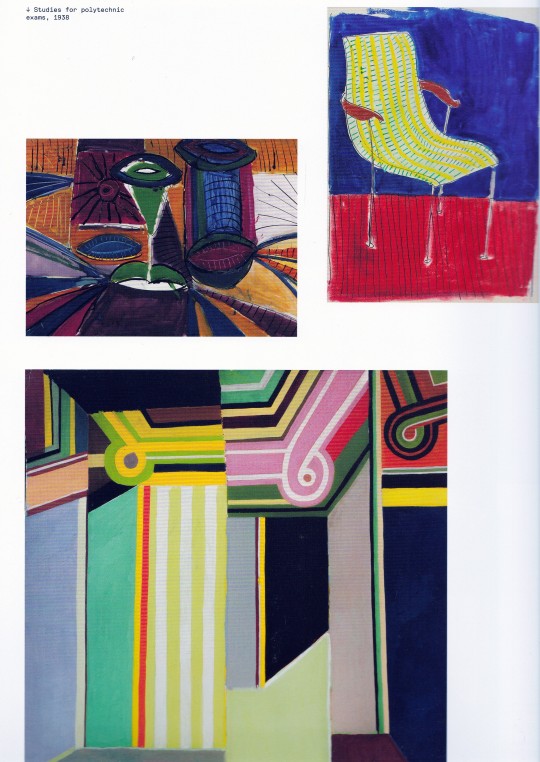



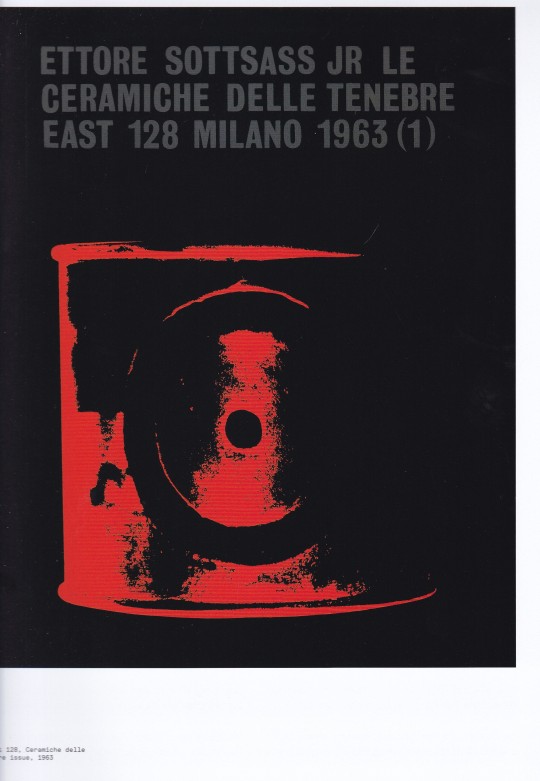
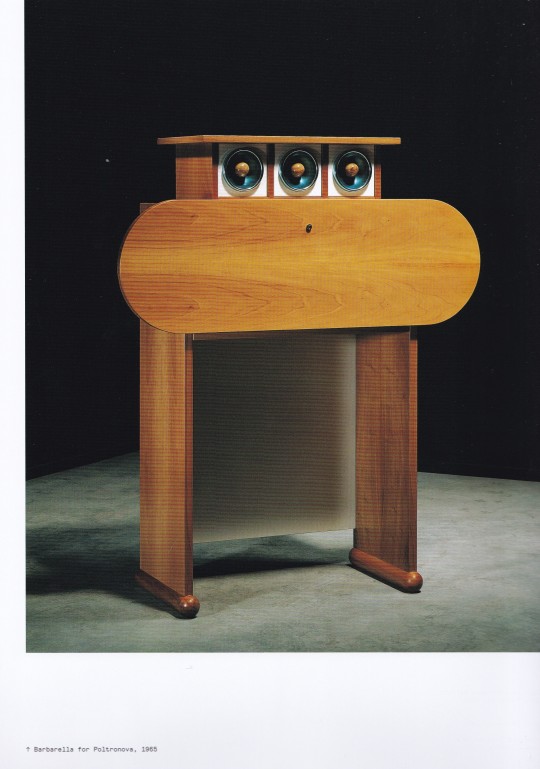
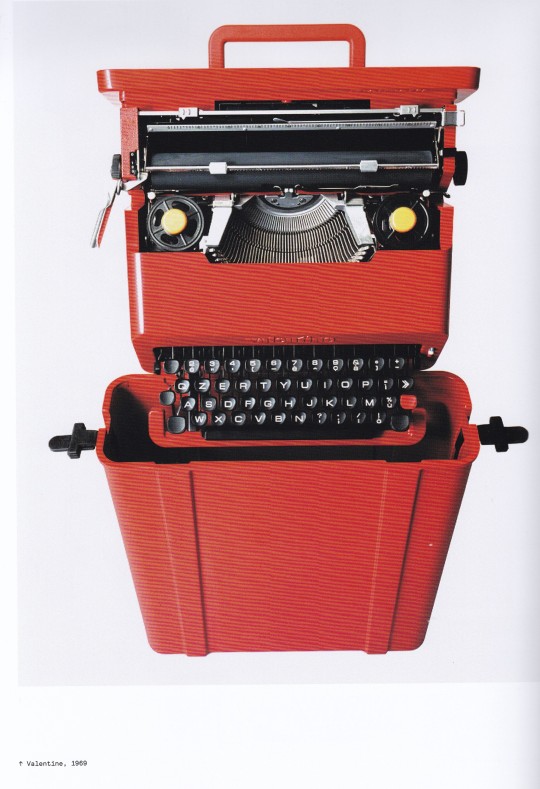



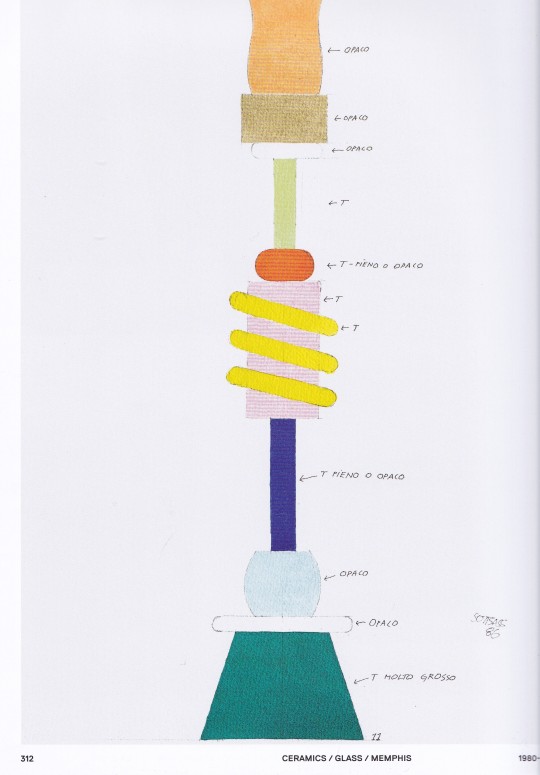
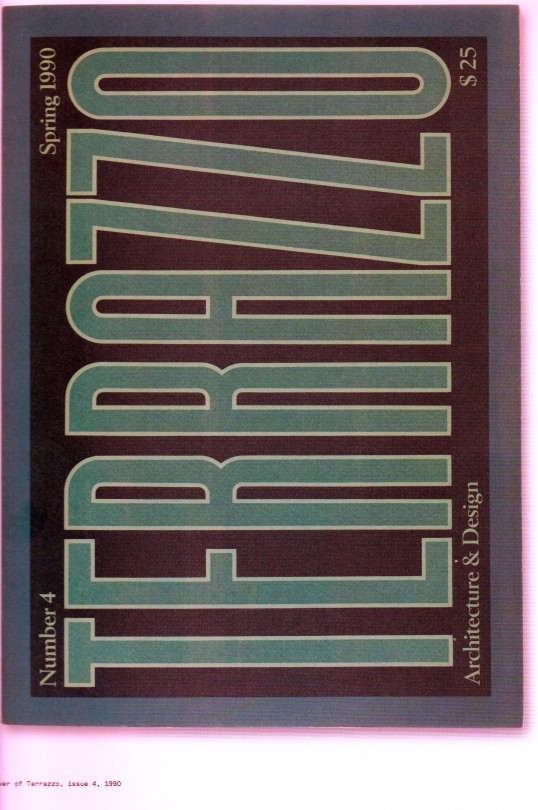

Sottsass
Philippe Thomé
Phaidon, London 2022 (First edition 2014), 472 pages, 23,5 x 32 cm, ISBN 978 1 83866 573 9
euro 69,95
email if you want to buy [email protected]
The re-release of this highly acclaimed title
demonstrates the continual fascination, from both
fans and collectors, with the life and work of Italian
architect and designer Ettore Sottsass. Packed
with beautiful images taken from the extensive
Sottsass archives and including drawings and
sketches from the designer’s countless
sketchbooks, the book explores his entire career
from the 1940s to the 2000s, covering everything
from his architectural projects and product design
to his ceramics, sculpture, and graphics.
Sottsass’s work is popular and infl uential in equal
measure, from his designs for Olivetti (such as the
striking, bright red, manual typewriter, the Valentine,
with its ingenious carry-case) to the post-modern
brilliance of the work of the Memphis Group, founded
by Sottsass in Milan in 1980
01/06/23
orders to: [email protected]
ordini a: [email protected]
twitter:@fashionbooksmi
instagram: fashionbooksmilano
designbooksmilano
tumblr: fashionbooksmilano
designbooksmilano
#Sottsass#Ettore Sottsass#architect & designer#Olivetti#Pianeta Fresco#Memphis#Poltronova#Valentine#Terrazzo#Venini#graphics#sculpture#ceramics#architectural projects#design books#designbooksmilano#fashionbooksmilano
23 notes
·
View notes
Text


Arendt Natalia Yurievna (born. 1959)
Paper, acrylic, collage, mixed media
In the upper left corner is the author's signature. On the back of the substrate are the author's signature, date and title.
Painter, sculptor. She took her first steps in art in the sculptural workshops of her grandfather Meer Eisenstadt, grandmother Ariadne Arendt and her husband Anatoly Grigoriev on Maslovka (1970s). She graduated from the Moscow Art Theater School, production faculty, specialty "stage artist" (1990). Lives and works in London (since 1991). Member of the youth section of the Moscow Union of Artists (1978), member of the sculpture section of the Moscow Union of Artists (1993). Participant of the 4th, 5th, 7th Moscow Biennale of Contemporary Art (2011, 2013, 2017-2018).
Litfund
9 notes
·
View notes
Text
Regency Romance Update: August 30, 2023
Okay! I think I got it figured out.

Cross dressing sub plot? Gone.
Running away from home? Gone.
This plot is now blackmail free baby! We're taking the theme of societal expectations being the route of all evil by the horns and letting it ride.
Juliana and Finn met in London a year after her brother's death. Finn was performing some Shakespeare, along with the acting company he is apart of to advertise an up coming production which Juliana happened to catch. Through a series of misunderstandings Finn thinks she is the maid servant to her friend Gwen. Juliana allows him to believes this and keeps up the lie as they exchange letters and moments through the course of the season. Unfortunately, Finn figures out she lied to him about her identity and decides to break it off, knowing there was no way in hell her family was ever going to approve of him.
Cut to eight years later, Juliana's father is now dead and her the estate has transferred to a distant cousin and/or uncle. She and her mother haven't been turned fro the house, but it's only a matter of time. Luckily, Lord Henry Ellington, an old friend of her brother's, proposed to Juliana and they're set to marry by the end of the month.
For the first time in years Juliana returns to London just in time for Finn to do the same. He's spent time traveling and improving on his writing to which Thomas Ellington, Lord Ellington's younger brother, has taken notice. Thomas is determined to make Finn the talk of London and bring him to the same ball Juliana happens to be attending.
Shenanigans Ensue.
There. I fixed it. Not nearly as convoluted. Still debating if I want to use flashbacks or not. I do think they can be really impactful if placed right, but we'll see. Bottom line though, we're keeping the conflict internal. It works better for the story anyway.
I'm feeling a lot better about this one. I still gotta work out a proper outline, but I've got a much clearer picture of it now, especially the ending.
And here is an obligatory snippet for your trouble.

“Where is Thomas?” Juliana asked.
“Late, but that’s not exactly a surprise,” Henry said with a resignation reserved for eldest siblings. “He insisted on bringing entertainment. No doubt he and his latest beneficiary got caught up in the preparations.”
A small smile touched Juliana’s lips. She knew Henry considered Thomas’ exploits exhausting, but she found them endearing. He always had some new "project", as he called it. Some painter or singer or sculpture that Thomas swore he would make the toast of London. They were always startlingly talented, devastatingly handsome, and endlessly fascinating. Even if the lords and ladies of upper society swore they would not allow such riff-raff into their homes, Thomas would find a way. He, and by extension they, were just too interesting to ignore.
She squeezed Henry’s arm in reassurance. “I’m sure he’ll not make too much of it for your sake."
tag list below the cut
@clairelsonao3, @auroramagpie
#writeblr#wip: untitled regency romance#regency romance#romance#original writing#snippet#author update#writers on tumblr#original romance#thomas ellington#henry ellington#juliana hamilton
17 notes
·
View notes
Text
tagged by @haydanakin thank you darling!!
tea, coffee, or soda? soda
dogs or cats? dogs dogs dogs!!
can you play an instrument? yeah guitar, bass and piano. haven’t played in a loong time though
what's your sun sign? gemini
first song lyrics that pop into your head? make me evil, then i'm an angel instead, at least you'll sanctify me when I'm dead
do you have any tattoos? not yet!!
favorite place you traveled? ohh either spain or london
what's the last movie you watched? probably some christmas movie lol. i’ve been too focused on tlou to watch movies
what languages do you speak? finnish, swedish and english
do you have any hobbies? mostly ones i can do in the comfort of my home so uh gifmaking, gaming, drawing, video editing, adventuring with my dog etc
you can hang out with one fictional character for an hour, who do you choose? how am i supposed to choose just one?? right now i want to say ellie williams but also mike wheeler because i need to study his brain
compliment yourself: you’ve been surprisingly productive lately good job
tagging (no pressure): @ronandreams @ceftali @hellshee @mlchaelwheeler @saws2004 @sharpesjoy @heroeddiemunson @castlescrumblingtv @djarin @usertomlinson @ice-sculptures
7 notes
·
View notes
Text

Owl — Eastern Greek fluorite carved idol, 4th-3rd century BC. (H: 48mm)
The tridimensional mini-sculpture is depicting the famous owl of Athens or ‘Athens noctua.’
This sculpture can be seen as a votive idol or a very precious protective amulet empowered by the image linked to the Goddess of wisdom and strategy.
This ancient micro-sculpture is carved in an extraordinary deep purple bicolor fluorite.
—
The mythological animal is characterized by horizontal elongated head with big rounded open-eyes.
The head feathers and the pupils are deeply carved.
The face is frontal while the body is turned to the left. The wings and some other feathers are represented by the same carved-lines.
The posture of the bird and the general appearance are referring to the mythological owl of the Goddess Athena, symbol of the city of Athens, Greece.
This unique specimen is a beautiful example of the ancient craftsmanship from the choice of the bicolor fluorite and its artisitc treatment, combining both the stone and the mythic animal characteristics to emphasize the power of the symbolic, hence the protective function of the sculpture.
During the Antiquity, the amulets, sculpted figures and vessels productions in fluorite are attested in ancient Greece and Rome as a precious stone, renowned for the wonderful colors and the perfect cleavage of crystals.
According to current studies, fluorite is referrable to the ancient and precious Murra, which is used to produce cups and table vases.
The oldest mention is from Sesto Properzio.
The most complete description is by Caius Pliny the Second, who considers it a gem, although it was not considered as such, for example, by the jurist Cassio Longino around 50 AD.
Private Collection; East London, UK
#owl#fluorite#carved idol#Athens#Athens noctua#amulet#sculpture#Athena#Greece#ancient craftsmanship#precious stone
5 notes
·
View notes
Text
Artist Research: The Chisel & Mouse Studio (Cityscapes)
Chisel & Mouse Studio is a UK-based design and manufacturing company that creates miniature cityscape sculptures. Their passion for architecture and design inspired them to create miniature replicas of famous buildings and cityscapes using a combination of traditional sculpting techniques and modern technology.

They began their process by taking hundreds of photographs and measurements of the buildings they want to replicate. They then use a combination of 3D printing and traditional hand sculpting techniques to create their intricate and detailed models. And finish inplaster and hand-finished, resulting in a beautiful, museum-quality sculpture.
The standout features of Chisel & Mouse's sculptures is their ability to capture the essence of a city in a single piece. Their London skyline, for example, features landmarks like Big Ben, the London Eye, and the Shard, all in one cohesive sculpture. This makes their sculptures not only beautiful pieces of art but also unique souvenirs for travelers and architecture enthusiasts alike.
3D Printing

In this industry, we are getting more advanced technologies to assist our society nowadays. 3D printing as part of production making, prop production or even model making had came in really handy in this century, the possibility to create had increases, from choices of materials to size ration. These equations would be done by computers, not only that. It has now adapt to the mechanic industry, sending a great boost to factory production.
As an artist, this could be a great tool to flex my work due to the accuracy it could do, but considering the cost and maintenance fee. It would be more sensible to be used in project production or sponsorship from industry.
3 notes
·
View notes